This Monday Miles will facilitate. He shares:
The dharma term emptiness (in Pali, sunyata) has generated enough discussion and writing to fill a lot of space! Why so much interest? At least in part because many dharma teachers have for many centuries seen it as a fundamental aspect of our world. Does living with emptiness mean, as a nihilist might say, that nothing matters or means anything? Thich Nhat Hahn advocates instead an inspiring view of emptiness that skillfully weaves in his concept of interbeing. He writes:
We do not have a stem linking us to our mother anymore, but when we were in her womb we had a very long stem, an umbilical cord. The oxygen and the nourishment we needed came to us through that stem. Unfortunately, on the day we call our birthday, it was cut and we received the illusion that we are independent. That is a mistake. We continue to rely on our mother for a very long time, and we have several other mothers as well. The Earth is our mother. We have a great many stems linking us to our mother Earth. There is a stem linking us with the cloud. If there is no cloud, there is no water for us to drink. We are made of at least seventy percent water; the stem between the cloud and us is really there. This is also the case with the river, the forest, the logger, and the farmer. There are hundreds of thousands of stems linking us to everything in the cosmos, and therefore we can be.
The interbeing and our web of connectivity that Thay so well describes and feels is clear: independent forms are empty. A deeper level of this interbeing is introduced when he writes:
Do you see the link between you and me? If you are not there, I am not here; that is certain. If you do not see it yet, look more deeply and I am sure you will see. This is not philosophy. You really have to see.
It is interesting that Thay asks whether we see such a fundamental level of connection, and then writes that if we do not, we should look more deeply and really see it. So let's accept his invitation and consider on Monday what he means, whether we may have experienced this level of interbeing and, if so, in what context.
A wave on the ocean has a beginning and an end, a birth and a death. But Avalokiteshvara tells us that the wave is empty. The wave is full of water, but it is empty of a separate self. A wave is a form that has been made possible, thanks to the existence of wind and water. If a wave only sees its form, with its beginning and end, it will be afraid of birth and death. But if the wave sees that it is water and identifies itself with the water, then it will be emancipated from birth and death. Each wave is born and is going to die, but the water is free from birth and death.
So you see there are many lessons we can learn from the cloud, the water, the wave, the leaf-and from everything else in the cosmos, too. If you look at anything carefully and deeply enough, you discover the mystery of interbeing, and once you have seen it you will no longer be subject to fear-fear of birth, or fear of death. Birth and death are only ideas we have in our minds, and these ideas cannot be applied to reality.
Full realization of interbeing? Although not there yet, I feel on the path that leads there and look forward to joining you for a walk there on Monday. Deep gratitude to Annie for responding to my question about emptiness and interbeing by referring me to an article by Thich Nhat Hahn from the August 6, 2012 issue of Lion's Roar entitled The Fullness of Emptiness, from which the above quotes were extracted.

